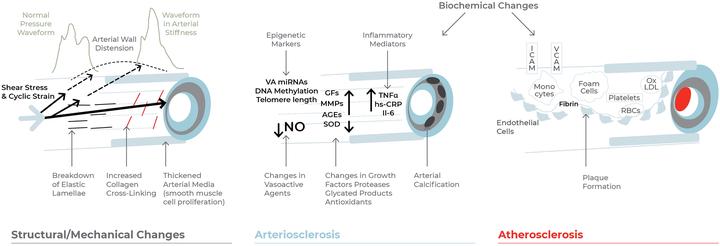 Image credit: Climie et al.
Image credit: Climie et al.
Abstract
Prevention of cardiovascular disease (CVD) remains one of the largest public health challenges of our time. Identifying individuals at increased cardiovascular risk at an asymptomatic, subclinical stage is of paramount importance for minimizing disease progression as well as the substantial health and economic burden associated with overt CVD. Vascular ageing (VA) involves the deterioration in vascular structure and function over time, and ultimately leads to damage in the heart, brain, kidney, and other organs. VA encompasses the cumulative effect of all cardiovascular risk factors on the arterial wall over the life course and thus may help identify those at elevated cardiovascular risk, early in disease development. Although the concept of VA is gaining interest clinically, it is seldom measured in routine clinical practice due to lack of consensus on how to characterise VA as physiological versus pathological and various practical issues. In this state-of-the-art review and as a network of scientists, clinicians, engineers and industry partners with expertise in VA, we address six questions related to VA in an attempt to increase knowledge among the broader medical community and move the routine measurement of VA a little closer from bench towards bedside.